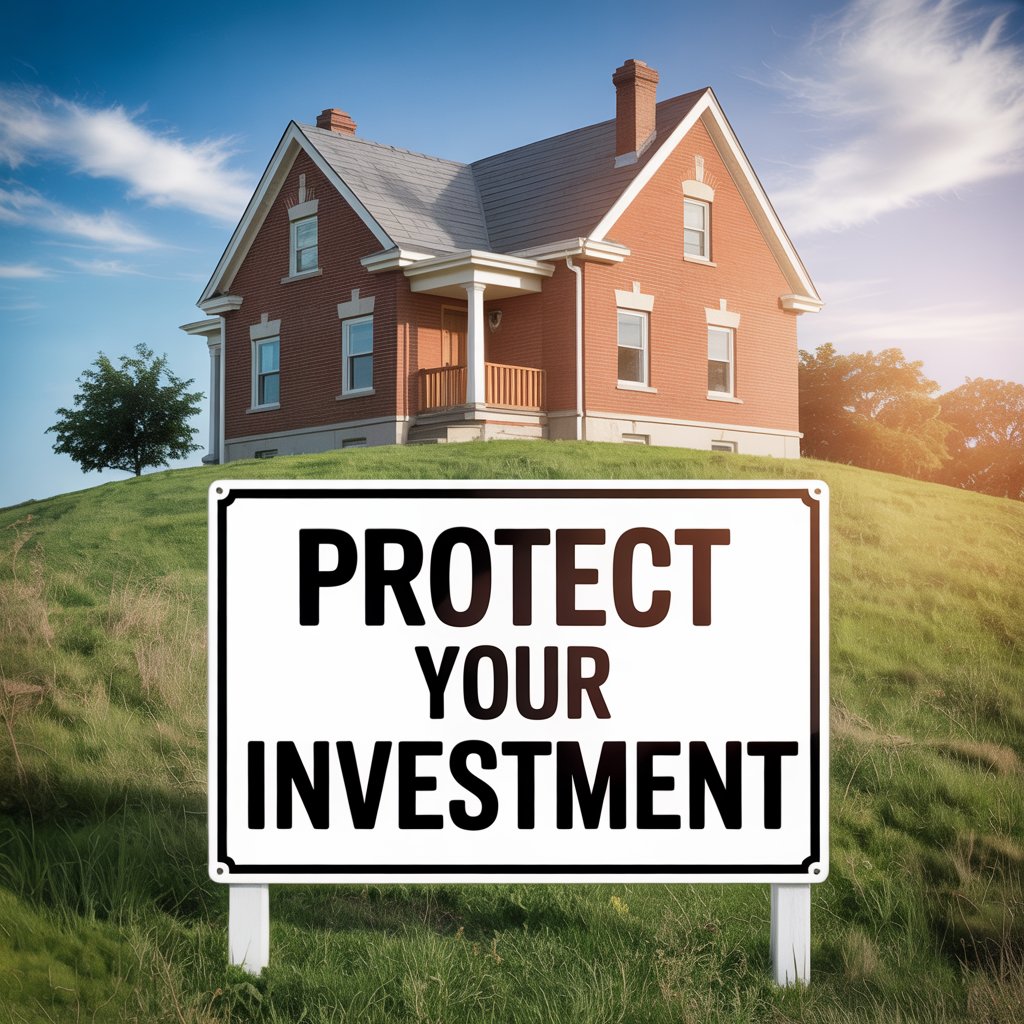As a marketing director with nearly two decades in the real estate investment space, I’ve navigated multiple economic cycles—from the dot-com bubble to the Great Recession and post-pandemic volatility. Right now, with economists predicting potential headwinds for 2025, I’m hearing increasing anxiety from clients about protecting their hard-earned real estate portfolios. The good news? Real estate, when managed strategically, remains one of the most resilient asset classes during economic downturns. But success requires preparation, not panic. Recent analysis shows over 300,000 seriously delinquent mortgages currently blocked from foreclosure by extended regulations unitedstatesrealestateinvestor.com—a clear indicator that market conditions are shifting. In this guide, I’ll share battle-tested strategies to not just survive but potentially thrive during economic uncertainty, transforming what many see as threats into opportunities for growth.

Why Real Estate is Your Best Recession Shield
Unlike stocks or commodities, real estate provides essential shelter—a non-discretionary expense that remains relatively stable even when consumers cut back elsewhere. During the 2008 recession, while the S&P 500 plummeted nearly 50%, well-located rental properties maintained 90-95% occupancy rates in resilient markets. One of the most significant advantages of real estate during a recession is the consistent income it can generate blog.reination.com. While stock dividends may be cut and businesses may struggle, people will always need housing. That’s why savvy investors preserve capital by focusing on properties that deliver steady cash flow rather than speculative appreciation.
Consider this: During economic contractions, two powerful dynamics converge favorably for real estate investors. First, affordable housing demand increases as residents opt for renting over homeownership when credit tightens. Second, well-positioned investors gain access to distressed assets at favorable terms when forced sellers emerge. Historical data shows that investors who maintained liquidity entering the 2008 downturn acquired properties at 30-40% below peak values. The key insight? Economic downturns don’t eliminate real estate value—they redistribute it from the unprepared to those with strategic positioning, adequate reserves, and deep market knowledge.
“A recession in 2025 could bring challenges, but it also presents opportunities for well-prepared investors. Understanding economic trends, monitoring interest rate movements, and focusing on cash-flow-generating properties will be key strategies to navigate the downturn successfully.” 208.properties
Pro Tip: The 70-20-10 Liquidity Rule
Before downturn hits, recalibrate your portfolio using this formula: 70% in core, cash-flowing assets; 20% in strategic reserves (6-12 months of operating expenses); 10% in opportunistic positions for future acquisitions. This structure provides both stability and flexibility when markets shift.
Strategic Property Selection: Building Inherent Resilience
Not all properties weather economic storms equally. Your defense begins with selection criteria that prioritize recession resistance over speculative growth potential. Focus on three pillars: location fundamentals, tenant demographics, and operational flexibility. Neighborhoods with strong job markets, universities, or military bases blog.reination.com consistently demonstrate lower vacancy rates during downturns because they contain embedded demand generators less susceptible to economic cycles. Similarly, properties catering to essential workers (healthcare, education, public safety) outperform luxury segments when disposable income contracts.
When evaluating specific assets, analyze tenant mix through a recession lens. Properties with diverse tenant profiles—not concentrated in cyclical industries—provide natural insulation. A multifamily property with teachers, nurses, and government employees will typically maintain occupancy better than one filled with tech workers during sector-specific downturns. Similarly, look for facilities with a long waiting list, indicating strong local demand relative to supply biggerpockets.com. This excess demand acts as a buffer when economic conditions tighten.
The following table illustrates resilience factors across property types during economic contractions:
| Property Type | Recession Resilience Score | Key Strengths | Risk Factors |
|---|---|---|---|
| Class B/C Multifamily | 9/10 | Steady demand, essential nature of housing | Higher maintenance costs |
| NNN Lease Retail (Essential Businesses) | 8/10 | Long-term leases, tenant responsible for expenses | Limited upside potential |
| Self-Storage | 7/10 | Low operating costs, month-to-month tenancy | Sensitive to interest rate changes |
| Office (Tech Tenants) | 4/10 | Potential for high returns in boom times | High vacancy risk during downturns |
| Luxury Condos | 3/10 | Appreciation potential in strong markets | Highly sensitive to credit conditions |
Financial Buffer: Your Safety Net Against Market Turbulence
No strategy matters if your financial structure collapses when income dips. Smart investors build defensive financial architecture before trouble appears. Start by stress-testing your portfolio against various downturn scenarios—test 10%, 15%, and 20% drops in occupancy and rental income. Investors should avoid overspending, overleveraging, and buying risky assets during a downturn renttoretirement.com. Most portfolio failures during recessions trace back to excessive leverage combined with insufficient cash reserves, not the properties themselves.
Refinance high-interest debt before rates potentially rise further, locking in longer terms even if rates are slightly higher. Consider debt service coverage ratios of at least 1.25x (meaning your property generates 25% more income than needed to cover debt payments). This buffer provides critical breathing room when vacancies temporarily increase. Many investors who survived the 2008 crisis had conservative debt structures—they didn’t bet on continuous appreciation to service debt. As interest rates fluctuate, having fixed-rate financing becomes increasingly valuable as economic uncertainty grows.
“If we are headed for a recession, it’s crucial to prepare by building a stable cash position and choosing smart investments.” renttoretirement.com
Cash Reserves Calculator for Downturn Protection
Use this simple formula to determine your minimum safety reserve:
Monthly Operating Expenses × Desired Reserve Period = Required Cash Reserve| Property Value | Monthly Expenses | 3-Month Reserve | 6-Month Reserve | 12-Month Reserve |
|---|---|---|---|---|
| Under $200k | $2,000 | $6,000 | $12,000 | $24,000 |
| $200k-$500k | $3,500 | $10,500 | $21,000 | $42,000 |
| Over $500k | $6,000+ | $18,000+ | $36,000+ | $72,000+ |
Data-Driven Decisions: Your Secret Weapon in Uncertain Times
Gone are the days of gut-feel real estate investing. Reventure Consulting teaches home buyers and real estate investors how to use data to make smarter investment decisions unitedstatesrealestateinvestor.com. By combining data from a variety of sources—including the US Census, BLS, Zillow, and Apartments.com—modern investors can anticipate market shifts before they become visible to the casual observer. Start tracking leading indicators like initial jobless claims, housing permits, and retail sales data specific to your markets rather than relying solely on lagging metrics like home price indices.
Focus on hyperlocal data rather than national trends. While national headlines may scream “recession,” opportunities exist in markets with strengthening fundamentals. Create a dashboard tracking:
- Local unemployment rates versus national averages
- Rent growth trajectory (not absolute rent levels)
- New construction pipeline relative to recent absorption
- Tenant credit score distributions in your target neighborhoods
I’ve seen investors successfully navigate downturns by shifting focus to value-add opportunities in transitional neighborhoods before broader market recognition. These properties often deliver stronger cash flow while providing long-term appreciation potential when the market recovers. Data doesn’t lie—if your target neighborhood shows improving credit scores among new tenants while unemployment remains stable, you’ve identified a resilient market.
Creative Investment Structures for Maximum Protection
Traditional sole ownership isn’t the only—or even the best—approach during economic uncertainty. Nowadays, I invest $5,000 each month in real estate, as a form of dollar-cost averaging biggerpockets.com. This disciplined approach smooths out market volatility while building meaningful exposure over time. I now own fractional interests across diverse markets and property types, which provides natural risk mitigation when regional economies perform differently during downturns.
Consider these recession-resilient structures:
- Syndications with Preferred Returns: Invest as a limited partner in established operators’ deals, receiving 6-8% preferred returns before the sponsor profits
- Real Estate Note Investing: Purchase discounted mortgage notes secured by property, generating income while having property as collateral
- Triple Net Lease Properties: With tenants responsible for taxes, insurance, and maintenance, these provide more predictable income streams
- REITs Focused on Essential Properties: Commercial REITs specializing in medical facilities, grocery-anchored retail, and industrial logistics
Dollar-cost averaging in real estate works differently than in stocks—you’re typically making periodic investments into funds or platforms that acquire properties over time rather than buying direct. Platforms offering fractional ownership allow investors to deploy smaller capital amounts across multiple properties, achieving diversification previously available only to institutional investors. I invest as simply one more member of SparkRental’s Co-Investing Club, spreading small amounts of money across many markets, property types, and operators biggerpockets.com.
Avoiding the Five Deadly Sins of Recession Investing
Even experienced investors make critical errors when stress-testing their portfolios. Understanding these pitfalls protects your capital:
- The Appreciation Trap: Banking on continued price growth rather than current cash flow makes portfolios vulnerable to interest rate hikes and credit tightening. Rental properties tend to hold their value in downturns (and command higher rents), making them some of the best investments in recessions renttoretirement.com.
- The Fix-and-Flip Fantasy: In volatile markets, holding periods often extend while financing becomes harder to secure. Fix-and-flippers could get trapped if home prices continue to slide unitedstatesrealestoneinvestor.com.
- The Concentration Catastrophe: Focusing investments in a single market or property type leaves portfolios exposed when that segment falters. True diversification means different geographies, property types, and tenant profiles.
- The Refinance Gamble: Assuming you’ll refinance problematic debt at favorable terms when markets tighten is dangerous. Secure long-term financing before conditions deteriorate.
- The Panic Sale: Selling quality assets at fire-sale prices during market lows destroys long-term wealth potential. Stick to your investment thesis unless fundamentals permanently change.
Positioning for Opportunity: The Investor’s Silver Lining
While economic downturns present challenges, they also create extraordinary opportunities unavailable during boom times. A recession can be a great time to invest since assets are often more affordable and debt is cheaper renttoretirement.com. The most successful investors don’t just defend—they strategically advance when others retreat. Begin preparing acquisition criteria now so you can move decisively when opportunities emerge:
- Build relationships with distressed property sellers (note holders, banks, heirs)
- Pre-qualify financing with multiple lenders for quick deployment
- Identify neighborhoods where fundamentals remain strong but prices have corrected
- Develop a rapid evaluation system for off-market opportunities
During the Great Recession, investors who maintained liquidity acquired single-family homes at $100,000 in markets where they now command $350,000+. History doesn’t repeat exactly, but it often rhymes. The investors who prepare today—not when headlines scream crisis—will be best positioned to capitalize on the inevitable market reset. This isn’t about predicting the exact timing of a potential 2025 downturn; it’s about ensuring your portfolio remains resilient regardless of short-term market fluctuations.
Your Action Plan: 30-60-90 Day Protective Measures
Prepare your portfolio in phases:
First 30 Days:
- Conduct stress tests on all properties at various vacancy levels
- Refinance adjustable-rate debt if possible
- Build your 6-month cash reserve minimum
60 Days:
- Contact tenants about potential assistance programs to maintain occupancy
- Review lease terms for renewal opportunities
- Identify potential cost reduction areas without compromising quality
90 Days:
- Join one fractional ownership platform to begin dollar-cost averaging
- Establish relationships with three local contractors for potential distressed deals
- Update your acquisition criteria for potential market opportunities
Conclusion: Your Path to Recession-Resilient Investing
Economic downturns aren’t a question of if but when—and preparation separates successful real estate investors from those who lose everything. By focusing on essential housing, maintaining conservative financing, leveraging data for strategic decisions, and building appropriate cash reserves, you transform economic vulnerability into competitive advantage. Remember that people will always need housing, even when economic conditions tighten—this fundamental truth makes real estate uniquely positioned to weather economic storms.
The most important step you can take today is assessing your portfolio through a recession lens, not waiting until crisis hits. Don’t let fear drive decisions; let strategy guide your actions. The investors who thrive during downturns aren’t the luckiest—they’re the best prepared. As you strengthen your portfolio against economic headwinds, remember that real estate’s greatest power isn’t in riding bull markets but in providing stability when other assets falter. Start implementing these strategies now, and you’ll not only protect your investments but position yourself to emerge from the next economic cycle stronger than before.
